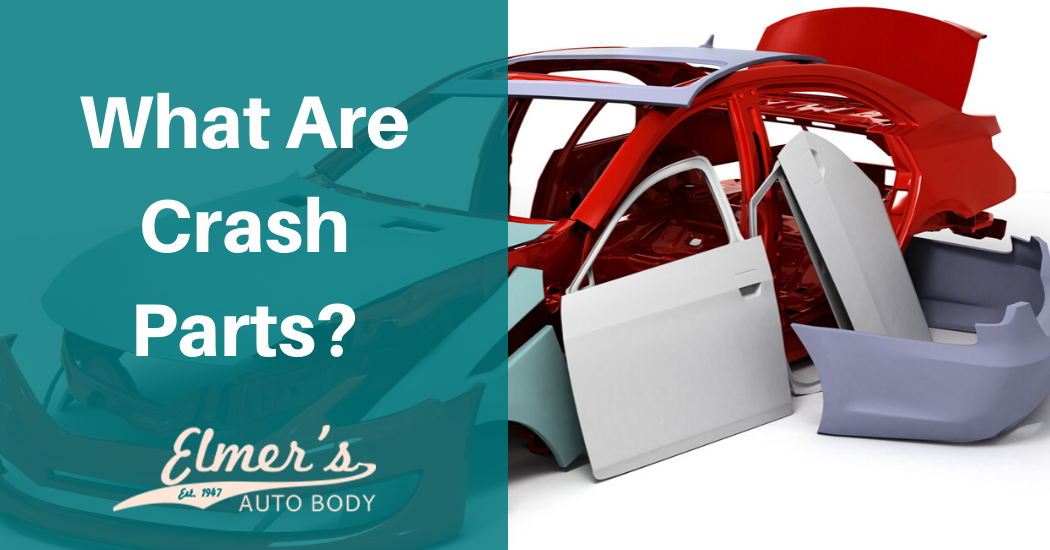You would think that crash parts would simply mean emergency exterior and interior parts needed for immediate replacement on a severely damaged vehicle. However, not all crash parts, otherwise known as cosmetic parts, are created equal. Many of these parts are looked at as aftermarket parts, or non-original equipment manufactured (Non-OEM). Crash parts are actually parts made through independent manufacturers who produce less costly replacement parts then OEMs, or original equipment manufacturers.
Categories
Many of these parts that are considered crash parts, or aftermarket parts, are divided into different categories. What constitutes a crash part? Here is a breakdown of parts.
Crash Parts
Crash parts are sheet metal or plastic parts installed on the exterior of a motor vehicle. When you speak of aftermarket parts, you are talking about non-original parts and non-original manufacturers. A “non-original manufacturer” is a manufacturer other than the original manufacturer. For example, an OEM, or original part, would be from a company that produces the gear shift, steering wheel, or tires that are placed on a new vehicle. They could be installed on a car, truck, or another type of vehicle as it goes down an assembly line in a car plant.
Crash Parts/Aftermarket Parts
Again, most crash parts are both sheet metal and plastic parts. Auto body shops install these on the outside of a vehicle. These aftermarket parts usually include:
- Hoods
- Doors
- Fenders
- Bumper
- Bumper accessories
- Inner and outer panels
Aftermarket Crash Parts Certification
CAPA, or the Certified Automotive Part Association, additionally categorizes aftermarket crash parts. This association assures the adaptability and quality of replacement or aftermarket parts.
To assess the quality of the parts, CAPA examines a host of different areas of a manufacturing plant. They assess the actual manufacturing process, the equipment used, and the final products produced. If the replacement parts meet specifications in their configurations, appearance, structure, composition, and mechanical processes, the aftermarket parts will rate a CAPA certification. If the parts are in line with new OEM parts, CAPA gives them their seal of approval.
Mechanical Parts
Those parts that are mechanical and not included within the crash parts category include:
- Engine parts
- Batteries
- Filters
- Shock Absorbers
- Mufflers
Consumer Crash Parts Issues
The latest trend when it comes to crash parts is repair shops involving consumers more in the repair process. When it comes to repairing a damaged vehicle, it boils down to whether or not an insurance company is going to pay for original equipment (OE) replacement parts or an alternative. Repair shops do their best to educate consumers as to what their rights are concerning the use of those parts.
Crash Parts Legislation
In addition to shop owners going to bat for consumers, it seems that crash parts legislation has come into its own. Most states have put through legislation intending to inform vehicle owners of the steps involved in a collision repair, and the parts used. In addition, groups led by the Automotive Service Association determined at a recent meeting with repair service experts, insurers, consumer groups, and service-related industries that an across the board policy should make consumers aware of the following:
- Consumers should be aware of the kinds of parts that auto body shops install in their vehicles.
- Consumers should be aware that they have the right to authorize (in written form) what parts the auto body shop can use on their vehicle during the lifetime of that vehicle.
In addition to the consumer protections, they placed a draft consent form under consideration. This consent form would inform the consumer of the kinds of parts that an auto body shop would use on their vehicles, along with a listing of the parts used in the repair. Once informed, consumers would be able to decide whether or not to use the parts selected. If a consumer chooses to agree to use the listed parts, he or she would sign the form. Another issue that arose was what parts an auto body shop would or wouldn’t use through a warranty period of a vehicle. The various groups did agree about a consumer’s right to know what type of parts an auto body shop would use.
Different State Crash Parts Legislation
Those that deal in collision repair also have a right to know what their state’s particular crash parts legislation entails. For example, the state of Washington requires that any transaction associated with an invoice must show whether any parts are used, rebuilt, aftermarket, or Non-OEM (body parts).
It’s important that consumers know what type of parts are being used in their vehicles and what their rights are when it comes to repairs. If you have questions regarding what your state may or may not require, or simply want to know more about crash parts, complete the online contact form. A parts expert will get back to you with the answers you need to understand your protections as a possible crash parts consumer.

